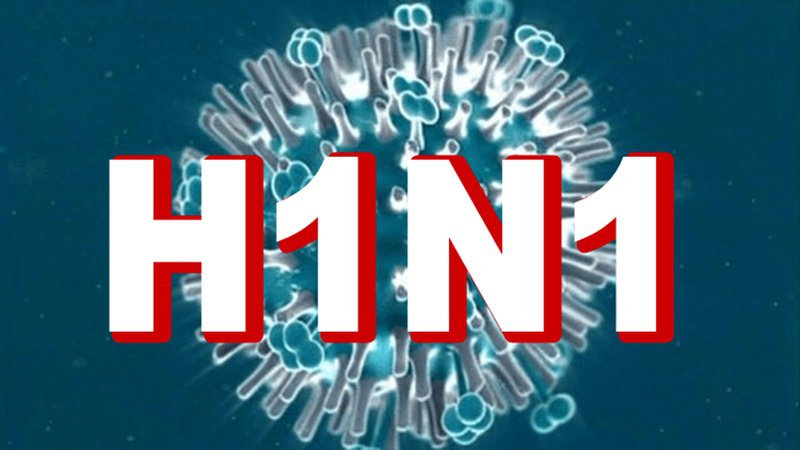Measures to prevent infection with influenza A H1N1 in Vietnam
What are the measures to prevent infection with influenza A H1N1 in Vietnam? - Minh Quan (HCMC, Vietnam)

Measures to prevent infection with influenza A H1N1 in Vietnam (Internet image)
The Ministry of Health of Vietnam has issued Decision 2762/QD-BYT 2009 dated July 31, 2009 on promulgating "Guidelines for diagnosis, treatment, and prevention of influenza A (H1N1) infection".
The Ministry of Health of Vietnam guides a number of measures to prevent the spread of influenza A H1N1, as follows:
1. Measures to prevent infection with influenza A H1N1 in Vietnam
In Section III of the Guidelines promulgated together with Decision 2762/QD-BYT 2009, measures to prevent infection with influenza A H1N1 are as follows:
1.1. Organizing isolation area in the hospital
- Organizing isolation areas like other dangerous infectious diseases.
+ Arrange a screening clinic to detect patients with suspected influenza infection in the examination area.
+ Arrange separate wards for suspected and infected cases in the infectious department and separate treatment areas.
- Limiting and controling people entering and leaving the isolation area.
1.2. Prevention measures for sick people and visitors
- All patients and people suspected of having the disease must wear surgical masks both inside and outside the ward.
Patients should be instructed on respiratory hygiene.
- When transporting the patient, it is necessary to notify the receiving facility in advance. The patient and the person transferring the patient should wear full personal protective equipment.
Disinfect vehicles after use.
- In case family members take care of the sick person or come into contact with the sick person, they must be guided, registered and apply infection prevention measures like medical staff.
1.3. Prevention measures for healthcare workers
- Washing hands regularly before and after examining the patient with soap or an antiseptic solution.
- Protective equipment includes: surgical masks, N95 masks, goggles, face masks, disposable paper gowns, gloves, hats, shoe covers or boots.
Protective equipment should always be available in the isolation area, used properly and when needed. After use, it is handled according to the regulations of the Ministry of Health.
- Specimens for testing: Must be placed in sealed plastic bags or transported in boxes according to regulations to the laboratory.
- Supervision: make a list of medical staff directly taking care of and treating patients, staff working at the department where the patient is located, and laboratory staff handling specimens.
These personnel should be monitored for body temperature and clinical manifestations on a daily basis.
- Pregnant employees and those with chronic cardiopulmonary disease should avoid contact with sick people.
1.4. Handling medical equipment, linens, and utensils used for patients
- Cleaning and disinfecting patient room surfaces with disinfectant solution twice daily.
- Medical instruments: Reusable instruments must be disinfected right at the isolation area, then transferred to a designated area for cleaning and sterilization.
- Means used for sick people: must be disinfected and cleaned with soap and disinfectant chemicals. Patients use their own tools for hygiene and nutrition.
- Fabrics: apply the same method of transportation and handling as dangerously contaminated fabrics (collect fabrics in yellow plastic bags before transporting them to the laundromat.
Not soaking fabrics in the isolation area. Washing fabrics in disinfectant solutions.
In case of washing by hand, the fabric must be disinfected before washing).
1.5. Handling patients who have passed
- Patients who have passed away must be buried in accordance with regulations on epidemic prevention, disinfected with disinfectant solution.
- Transport the corpse to the place of burial or cremation by private vehicle and ensure compliance with regulations on infection prevention.
- Within 24 hours, the body must be buried or cremated.
1.6. General prevention measures
- In the epidemic area, you must wear a mask.
- Increase hand washing.
- Personal hygiene, respiratory hygiene, and mouth and throat gargling with antiseptic drugs under the guidance of the Ministry of Health.
- Avoid large gatherings when an epidemic occurs.
2. What is influenza A H1N1?
According to the Guidelines for diagnosis, treatment, and prevention of influenza A H1N1 infection issued together with Decision 2762/QD-BYT in 2009, Influenza A H1N1 is transmitted from person to person, with diverse clinical manifestations, many severe cases, rapid progression, easily leading to death.
- Key word:
- influenza A H1N1 in Vietnam
- A H1N1 in Vietnam
- Cases of land rent exemption and reduction under the latest regulations in Vietnam
- Economic infrastructure and social infrastructure system in Thu Duc City, Ho Chi Minh City
- Regulations on ordination with foreign elements in religious organizations in Vietnam
- Increase land compensation prices in Vietnam from January 1, 2026
- Determination of land compensation levels for damage during land requisition process in Vietnam
- Who is permitted to purchase social housing according to latest regulations in Vietnam?
-

- Notable new policies of Vietnam effective as of ...
- 16:26, 11/04/2025
-
.Medium.png)
- Notable documents of Vietnam in the previous week ...
- 16:21, 11/04/2025
-
.Medium.png)
- Notable documents of Vietnam in the previous week ...
- 16:11, 02/04/2025
-
.Medium.png)
- Notable new policies of Vietnam to be effective ...
- 16:04, 02/04/2025
-
.Medium.png)
- Notable new policies of Vietnam effective from ...
- 14:51, 21/03/2025
 (1).png)
 Article table of contents
Article table of contents
